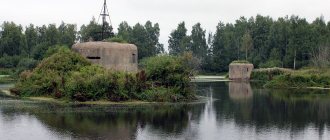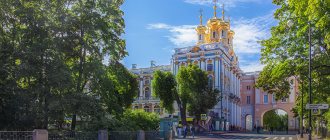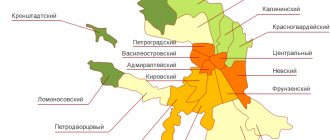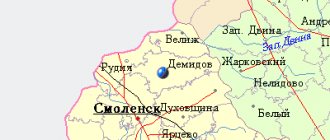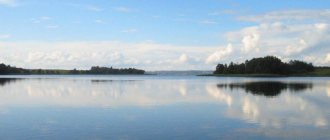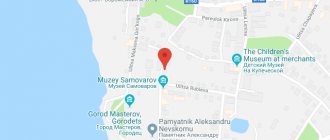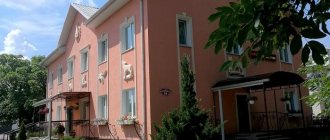Location
The Gatchina district adjoins St. Petersburg from the south.
The Gatchina district is located in the central part of the Leningrad region in the basins of the Oredezh and Izhora . In the north, the district borders with the Pushkinsky district of St. Petersburg, in the north-west - with Lomonosovsky, in the south - with Luzhsky, in the west - with Volosovsky and in the east - with Tosnensky districts of the Leningrad region. The district includes 6 urban and 11 rural settlements. The administrative center of the district is the city of Gatchina .
The area of the district is 2892 square meters. km. The population of the district as of January 1, 2012 was 237.7 thousand people.
Today the Gatchina municipal district is one of the largest developed industrial and agricultural districts of the Leningrad region. Woodworking, pulp and paper, and light industries are developed. In agriculture: meat - dairy farming, potato growing, vegetable growing.
Two railways and one federal highway pass through the district.
Railway lines:
- St. Petersburg - Luga (Verevo, Gatchina-Varshavskaya, Siverskaya, Stroganovo stations),
- St. Petersburg - Oredezh (stations Antropshino, Semrino, Vyritsa, Novinka, Chasha),
- St. Petersburg - Gatchina-Baltiyskaya (Taytsy, Pudost, Gatchina-Baltiyskaya stations),
- MGA - Ivangorod (stations Vladimirskaya, Sabra, Frezerny, Gatchina-Tovarnaya, Voyskovitsy, Elizavetino)
Highways: St. Petersburg - Pskov - Pustoshka - Nevel and further to the border with the Republic of Belarus, "Magistralnaya" Southern semi-ring Bolshaya Izhora - Kirovsk, Gatchina - Opole, Kempolovo - Vyra - Tosno - Shapki, Krasnoe Selo - Gatchina - Pavlovsk, Gatchina — Kurovitsy
Pulkovo International Airport is located 18 km from the northern border of the district. The Sivoritsy airfield is located in the village of Nikolskoye, and the ROSTO aviation sports club operates on its base. There is a military airfield in Siverskoye.
Gatchina
Video: Gatchina from above
Basic moments
Gatchina is located in the southwestern part of the region, 8 km south of the border of St. Petersburg and 41 km from its historical center.
The city is an industrial, scientific, cultural and educational center of the Leningrad region. The main attraction of Gatchina is the state museum-reserve of the same name, which includes a palace and park ensemble and the Gatchina Palace, built at the end of the 18th century according to the design of Antonio Rinaldi. The atmosphere of the architect’s homeland has taken root perfectly in the harsh northern expanses - it seems as if Gatchina is always full of sun.
Attractions
The palace and park ensemble of Gatchina consists of four parks: Palace, Menagerie, Prioratsky and Silvia - with a system of lakes, two palaces and many pavilions. The parks are very unkempt, there is a lot of garbage, and most of the buildings are in ruins. Entrance to the parks is free.
The main palace was built in 1766-1781 according to the design of Antonio Rinaldi; after the war it was heavily damaged and not all rooms have been restored to this day. A suite of 18th-century state rooms has been unveiled, including an outstanding collection of weapons. An underground passage leads from the palace to the shore of Silver Lake, ending in the Echo Grotto. Between the palace and the railway there is a monumental and semi-abandoned building of the palace stables (1798-1800), which now houses the naval archive.
In the Priory Park there is the second attraction of the Gatchina parks - the Priory Palace (1798-1799). It was intended for the prior of the Order of Malta, expelled from France, of which Paul was elected Grand Master in 1798. The palace is unique in that it is built of earth (the motivation for this choice was to eliminate the risk of fire). Walls, fences and surrounding buildings were built from compressed earth. Only the retaining wall and tower are made of stone.
Gatchina itself was badly damaged during the war and now consists of a collection of buildings from completely different periods: classicism of the 19th century, modernism of the early 20th century, faceless houses of the Soviet period.
How to get there
There are two railway stations in Gatchina: Gatchina-Baltiyskaya and Gatchina-Varshavskaya. Electric trains to both depart from the Baltic Station in St. Petersburg (the journey takes about an hour). There are fewer trains to Gatchina-Baltiyskaya and they take longer (about an hour and a quarter), but the Baltic Station is located just a few hundred meters from the entrance to the palace.
Buses No. 100 and No. 18 depart from the Moskovskaya metro station.
Story
Before the creation of the provincial system, this territory was part of the Vodskaya Pyatina of the Novgorod Land and was mainly inhabited by the Finno-Ugric tribes Vod and Izhora.
On January 1, 1780, by decree of Catherine II, the Sofia district was formed as part of the St. Petersburg province with its center in the city of Sofia.
In 1796, the territory of the abolished Rozhdestvensky district became part of the district.
In 1808, the city of Sofia was united with Tsarskoe Selo into the city of Tsarskoe Selo, and the district was renamed Tsarskoe Selo.
The presence of imperial residences in it (in Pavlovsk, Gatchina and Tsarskoe Selo) played a serious role in the life and development of the district. Thus, in 1836, the first in Russia and the sixth in the world, the Tsarskoye Selo railway, was built, and Tsarskoye Selo became the first fully electrified city in Europe.
After Tsarskoye Selo was renamed Detskoye Selo in 1918, the district was named Detskoselsky.
Until 1922, the territory of the Gatchina district was part of the Detskoselsky, Peterhof and Luga districts of the Leningrad province, while the Gatchina volost existed as part of the Detskoselsky district. On November 1, 1922, Trotsky district was formed, which included the territory of the abolished Detskoselsky and Peterhof districts.
In September 1927, the Trotsky district was formed as part of the Leningrad district of the Leningrad region, while the Trotsky district was divided into 5 districts. In August 1929, the district was renamed Krasnogvardeisky. In 1930, due to the abolition of the districts, it entered directly into the region. In October 1938, the city of Krasnogvardeysk was transformed into an independent administrative and economic unit with the direct subordination of its city council to the Leningrad regional council.
At the beginning of September 1941, large settlements in the region with railway stations - Siversky and Vyritsa - were captured. On September 13, Krasnogvardeysk was captured, and already on September 15, the area was completely occupied by German troops consisting of the 18th Army and the 4th Tank Group.
The liberation of the area began on January 20, 1944. Three days later, on January 23, by a decree of the PVS of the USSR “at the request of Leningrad organizations,” the city of Krasnogvardeysk was renamed Gatchina, and the Krasnogvardeysky district was renamed the Gatchina district. The city was liberated after three days of fierce fighting on January 26, and on February 3 the last settlements in the area were liberated.
In July 1953, part of the territory of the abolished Pavlovsky district became part of the Gatchina district .
In 1993, the urban-type settlement of Kommunar received city status.
The Gatchina district is located in the central part of the Leningrad region in the basins of the Oredezh and Izhora . In the north, the district borders with the Pushkinsky district of St. Petersburg, in the north-west - with Lomonosovsky, in the south - with Luzhsky, in the west - with Volosovsky and in the east - with Tosnensky districts of the Leningrad region. The district includes 6 urban and 11 rural settlements. The administrative center of the district is the city of Gatchina .
The area of the district is 2892 square meters. km. The population of the district as of January 1, 2012 was 237.7 thousand people.
Before the creation of the provincial system, this territory was part of the Vodskaya Pyatina of the Novgorod Land and was mainly inhabited by the Finno-Ugric tribes Vod and Izhora.
On January 1, 1780, by decree of Catherine II, the Sofia district was formed as part of the St. Petersburg province with its center in the city of Sofia.
In 1796, the territory of the abolished Rozhdestvensky district became part of the district.
In 1808, the city of Sofia was united with Tsarskoe Selo into the city of Tsarskoe Selo, and the district was renamed Tsarskoe Selo.
The presence of imperial residences in it (in Pavlovsk, Gatchina and Tsarskoe Selo) played a serious role in the life and development of the district. Thus, in 1836, the first in Russia and the sixth in the world, the Tsarskoye Selo railway, was built, and Tsarskoye Selo became the first fully electrified city in Europe.
After Tsarskoye Selo was renamed Detskoye Selo in 1918, the district was named Detskoselsky.
Until 1922, the territory of the Gatchina district was part of the Detskoselsky, Peterhof and Luga districts of the Leningrad province, while the Gatchina volost existed as part of the Detskoselsky district. On November 1, 1922, Trotsky district was formed, which included the territory of the abolished Detskoselsky and Peterhof districts.
In September 1927, the Trotsky district was formed as part of the Leningrad district of the Leningrad region, while the Trotsky district was divided into 5 districts. In August 1929, the district was renamed Krasnogvardeisky. In 1930, due to the abolition of the districts, it entered directly into the region. In October 1938, the city of Krasnogvardeysk was transformed into an independent administrative and economic unit with the direct subordination of its city council to the Leningrad regional council.
At the beginning of September 1941, large settlements in the region with railway stations - Siversky and Vyritsa - were captured. On September 13, Krasnogvardeysk was captured, and already on September 15, the area was completely occupied by German troops consisting of the 18th Army and the 4th Tank Group.
The liberation of the area began on January 20, 1944. Three days later, on January 23, by a decree of the PVS of the USSR “at the request of Leningrad organizations,” the city of Krasnogvardeysk was renamed Gatchina, and the Krasnogvardeysky district was renamed the Gatchina district. The city was liberated after three days of fierce fighting on January 26, and on February 3 the last settlements in the area were liberated.
In July 1953, part of the territory of the abolished Pavlovsky district became part of the Gatchina district .
In 1993, the urban-type settlement of Kommunar received city status.
Today the Gatchina municipal district is one of the largest developed industrial and agricultural districts of the Leningrad region. Woodworking, pulp and paper, and light industries are developed. In agriculture: meat - dairy farming, potato growing, vegetable growing.
The climate of the region is Atlantic-continental. Marine air masses cause relatively mild winters with frequent thaws and moderately warm, sometimes cool summers. The average temperature in January is -8 °C, in July +17 °C.
Many rivers flow through the region, the largest of which are Izhora and Oredezh . The largest lakes are Vyalye and Orlinskoye . A significant part of the district, especially in the southeastern part, is swampy.
Two railways and one federal highway pass through the district.
Railway lines: St. Petersburg - Luga (Verevo, Gatchina-Varshavskaya, Siverskaya, Stroganovo stations), St. Petersburg - Oredezh (Antropshino, Semrino, Vyritsa, Novinka, Chasha stations), St. Petersburg - Gatchina-Baltiyskaya (Taitsy, Pudost, Gatchina-Baltiyskaya), Mga - Ivangorod (stations Vladimirskaya, Sabra, Frezerny, Gatchina-Tovarnaya, Voyskovitsy, Elizavetino)
Highways: St. Petersburg - Pskov - Pustoshka - Nevel and further to the border with the Republic of Belarus, "Magistralnaya" Southern semi-ring Bolshaya Izhora - Kirovsk, Gatchina - Opole, Kempolovo - Vyra - Tosno - Shapki, Krasnoe Selo - Gatchina - Pavlovsk, Gatchina — Kurovitsy
Pulkovo International Airport is located 18 km from the northern border of the district. The Sivoritsy airfield is located in the village of Nikolskoye, and the ROSTO aviation sports club operates on its base. There is a military airfield in Siverskoye.
The following specially protected natural areas are located in the district:
" Mshinskoe Bog " - federal complex reserve
" Glebovskoe Bog " - regional hydrological reserve
" Rakitinsky " - regional botanical reserve
" North of Mshinsky Swamp " - regional hydrological reserve
“ Devonian outcrops on the Oredezh River near the village of Belogorka ” - a geological natural monument
In addition, a natural park “ Verkhniy Oredezh ”
The Gatchina municipal district is famous for its unique palace and park ensemble, amazing historical and cultural monuments; on its territory there are 26 estates that belonged to famous figures of public and state life in pre-revolutionary times.
Museum "Gatchina Palace" (from 10 to 18 (ticket office until 17), closed on Monday and 1st Tuesday of every month, Tel.: (8-81371) 9-34-92). At the highest point of the hill on the shore of Silver Lake in Gatchina stands a monumental building faced with Pudost limestone. The Imperial Palace is the only “castle palace” in the suburbs of St. Petersburg.
“Verkhny Oredezh” especially stands out . Along with the park’s fairly developed transport infrastructure, its amazing nature has been preserved: the basin of the upper reaches of the Oredezh River with its famous red high banks, which are composed of ancient red Devonian sandstones (such soils are only found in Yellowstone National Park in the USA) and the so-called “taiga zone” in which the opportunity to hunt wild boar, bear, lynx, and elk is attractive. Fishing enthusiasts especially appreciate the upper reaches of the river, where large trout (up to 8 kg) are found, and in flowing lakes - pike, perch, bream, asp and other fish species.
A special route includes a section of the route that became the Pushkin Museum Ring of the Gatchina District of the Leningrad Region, which includes historical monuments, estates and museums associated with the name of A.S. Pushkin .
Several museums and 2 memorial signs are located and operate on the territory of the Gatchina district
Museum “ Station Master's House ”, Vyra village;
museum-estate “Suida” (Museum-estate of Hannibal), Suida village, st. Central, 4 (Opening hours: from 10.00 to 17.00, weekends - Monday and Tuesday). In the 17th century, during the Swedish occupation, a manor estate, Suida Manor, was created half a mile from the village of Suida. It is documented that its first owners were the German colonists of Rohr.;
Museum "Nanny's House A.S. Pushkin " , Kobrino village. As a token of gratitude, in 1795, Maria Alekseevna allocated a separate hut for Arina Rodionovna’s family. In 1798, the Pushkin family moved to Moscow. The nanny also left with them. In 1800, the village of Kobrino was sold. M.A. Hannibal, obviously, agreed with the new owners that Arina Rodionovna’s husband and children, excluded from the “for-sale” Kobrino, would live in this hut for an indefinite period of time;
old Suydinskaya road, grave of A.P. Hannibal . Unfortunately, the grave of “Arap Peter the Great,” buried in the old Suydinsky cemetery, has not survived. Now at the supposed burial site of A.P. Hannibal in 1971, a memorial granite stele has been installed. The stone tombstone, like the ancient cemetery itself, has not survived to this day. His last traces were lost in 1976...;
a memorial sign with the inscription: “A monument to Arina Rodionovna Yakovleva, A.S. Pushkin’s nanny, will be erected here,” p. Voskresenskoe.
“ House-Museum of the composer Isaac Schwartz ”, Siversky village (tel.), Pushkinskaya st., 4. In this small wooden house, built in 1964, composer Isaac Iosifovich Schwartz lived and worked fruitfully for the last 45 years of his life.
The Rozhdestveno estate museum is located in the estate house of I.V. Rukavishnikov in the village. Rozhdestveno. XVIII century The last owner of the manor house was the famous Russian writer Vladimir Vladimirovich Nabokov (grandson of V.I. Rukavishnikov).
The estate park at the Rozhdestveno museum-estate has an area of 16 hectares with a length (more than 500 m), a central alley with 150-year-old linden and oak trees, ending with the canyon of the Grezna River with cliffs of red sandstones, rock springs and a complex of caves. Travel along the Kievskoe highway from St. Petersburg to the village of Rozhdestveno (74 km of the Kievskoe highway).
Museum Dacha Capital - (tel.). The new Siversky Historical and Household Museum was also proudly called the “Dacha Capital”. After all, it was Siverskaya in the second half of the 19th century that was considered the best dacha place near St. Petersburg, becoming a true Mecca for St. Petersburg summer residents.
Museum of the Krasnogvardeisky fortified area (Novy Svet village, no. 82).
Historical and Memorial Museum-Estate of P.E. Shcherbova , Gatchina, st. Chekhova, 4, Tel.: 2-08-64, 2-10-88.
Priory Palace Museum , Gatchina, st. Chkalova (open from 10 to 18 (ticket office until 17), closed on Monday and the 1st Tuesday of every month, Tel.: (8-81371) 7-64-67). It remained the seat of the Order of Malta for no more than ten years. Throughout the 19th century, the Priory led the quiet life of a spare palace and occasionally hosted august owners within its walls. During the years of Soviet power, it served the needs of Leningrad workers, who spent their summer holidays there, and Gatchina children, who came to it for classes at the House of Pioneers and for the exhibition of the Local History Museum.
Museum of Aviation Engine Building and Repair , Gatchina, st. Grigorina, 7a (Opening hours: Fri, Sat, Sun from 11.00 to 16.00). The museum was created by the team of the 218th Aircraft Repair Plant and is located on its territory.
View a list of churches and estates located in the area.
Official website of the district administration: www.radm.gtn.ru
Nature
The climate of the region is Atlantic-continental. Marine air masses cause relatively mild winters with frequent thaws and moderately warm, sometimes cool summers. The average temperature in January is -8 °C, in July +17 °C.
Many rivers flow through the region, the largest of which are Izhora and Oredezh . The largest lakes are Vyalye and Orlinskoye . A significant part of the district, especially in the southeastern part, is swampy.
The following specially protected natural areas are located in the district:
- " Mshinskoe Bog " - federal complex reserve
- " Glebovskoe Bog " - regional hydrological reserve
- " Rakitinsky " - regional botanical reserve
- " North of Mshinsky Swamp " - regional hydrological reserve
- “ Devonian outcrops on the Oredezh River near the village of Belogorka ” - a geological natural monument
- The Verkhniy Oredezh natural park is being designed
